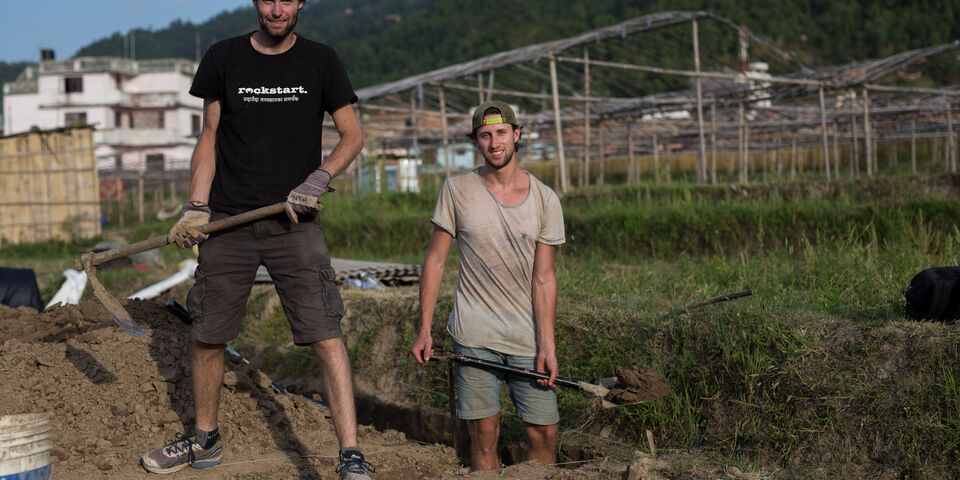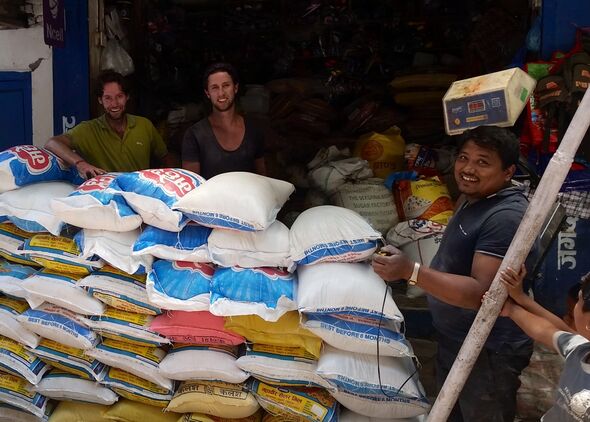TU/e student helps people of Nepal after devastating earthquakes
TU/e student of Operations, Management and Logistics Tobias Ouwerkerk has recently left Singapore suddenly to head for Nepal. He's there to help the victims of the earthquakes by joining the Nepal Grassroots Recovery organization, which was co-founded by a friend. After having been there for several weeks, Tobias talks to Cursor.
"This article was supposed to tell the story of my exchange period in Singapore. However, the moment a 7.8 earthquake hit Nepal, my life dramatically changed.
Initially, I planned to trek to Mount Everest’s Basecamp with Robbert, a friend currently living in Nepal. An ambitious goal, but one that was supposed to form the ultimate experience after an amazing semester in Southeast Asia. “Ending our travel with a bang” was the plan. Little did we know… The moment the earthquake hit, we realized our climb would be impossible. However, since Nepal was heavily devastated, we felt that our help was needed more then ever. Robbert co-founded the organization Nepal Grassroots Recovery, which I joined. Drawing upon our skills, we saw the need for long-term thinking, more structural (sustainable) solutions and efficiency.
Our goal is to provide emergency food and shelter for the displaced people of Nepal. With monsoon season less than one month away, we have been working 15hr days, providing both immediate and long term aid to the devastated villages in the remote regions of Sindhupulchowk, Nepal, the most affected district region of Nepal. Since we are a small organization, we can act faster, more flexible and with less overhead then the bigger disaster relief organizations.
In fact, we often were one of the first to reach the remote villages which needed help the most. We deviated from other organizations in that we aimed to “work hard, work smart”. Examples include sourcing material used for raincoats, and hiring local seamstresses to turn these into shelters. By producing, and not simply purchasing, we avoid competition with other organizations for the locally available tents. To top it off all of the production costs ($1.00usd/square meter) go directly into the economy of Nepal.
While the supplies are being delivered to the villages, our assessment team is hiking to the next villages further up the mountain to assess the situation and prepare the distribution of aid the following day. When we arrive we are distributing our rice to the women of the villages with the help of the village leaders. This prevents the aid from being used as bargaining chips for sexual favors and exploitation which occurs frequently in these situations.
Slowly moving our operations from short-term to longer-term relief, we are now experimenting with economically viable eco-friendly housing options. These sand bag houses cost around $100 US, last atleast 20 years, and only take a few days to build.
During the weeks after the first earthquake, stress was slowly diminishing amongst the people (including us). However, with the recent 7.4 quake, chaos driven panic once again took over the social atmosphere; sending everybody to the safety of our tents and open spaces. Robbert and I left the centre of Kathmandu expecting a new cycle of aftershocks, only to return a day later since we felt our true place was amongst the people, running our operations and distributing aid.
I've experienced some wonderful moments, put a lot of smiles on people's faces and felt a lot of support from back home. I've also had some not-so-good moments, feeling helpless and seeing awful things. The past weeks have been a rollercoaster ride, but hey, I am alive…in fact I feel more alive than ever!
Right now Nepal has just started their recovery. They have a long way to come. If you'd like to know more, or make a donation visit our website at:http://www.nepalgrassrootsrecovery.org/."



Discussion